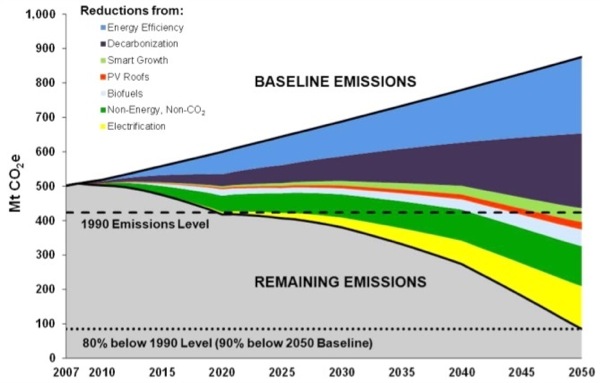A new study suggests one word: Electrification

Chances are you’ve at least heard about California’s legal requirement to wind back greenhouse gas emissions to 1990 levels by 2020. But the state has a longer-term goal to knock another 80% off that by 2050. Is that even possible?
A new study suggests that it is — but not without a wholesale transformation from an “oil economy” to an “electric economy.”
The study, a collaboration of economists and energy forecasters at several institutions, including Lawrence Berkeley National Lab, three fundamental resets will be required to make that goal:
• Continued advances in energy efficiency, at home and at work
• A grid powered with nearly carbon-free electricity
• Massive electrification of — well, most things, including transportation
The study suggests that biofuels (principally ethanol and algae-based biodiesel) could cover the gap where it’s impractical to electrify transport, such as long-haul trucking and airline fleets.
The authors ran the numbers to see how much each measure would have to contribute, concluding that more than half the headway could come from a combination of energy efficiency gains (28%) and replacing fossil fuel power plants with renewable energy (27%). California currently requires utilities to get a third of their power from renewable sources by 2020. Most appear to be on a path to meet that goal.
Other measures would include so-called “smart growth” planning strategies, greater use of rooftop solar panels and biofuels. But 16% of the solution would require the massive conversion to electrical power of things that typically run on other fuels today; motor vehicles, public transit, industrial processes and heating of buildings.

The article, by James H. Williams and seven co-authors, appears at Sciencexpress.org, a publication of the AAAS. Downloading the full article requires a subscription.

